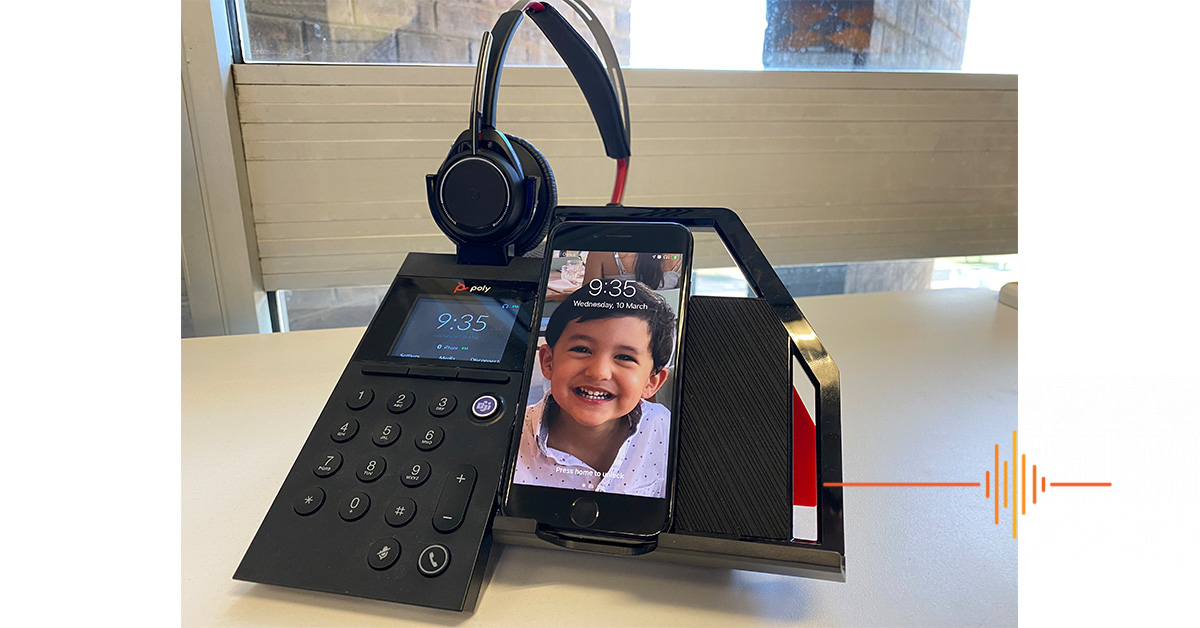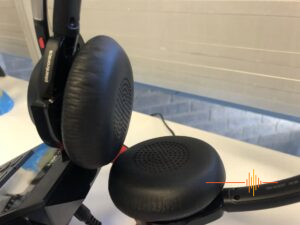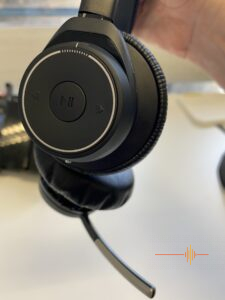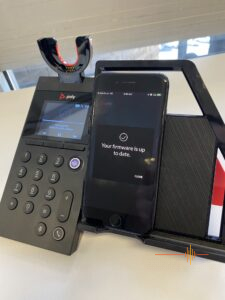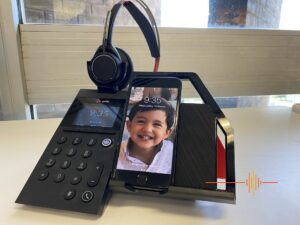 It’s funny how sometimes, a product that’s released to market can almost eerily foretell the seismic shift in how WFH (working from home for the uninitiated) would become commonplace. Pandemics are nothing new (Spanish flu, anyone?). Still, it’s the first time in over 100 years we’ve seen enforced lockdowns, and being the post-digital era, a device like the Poly Elara 60 makes a lot of sense, especially when combined with Poly’s headset, the Voyager Focus UC, which is also featured in this review.
It’s funny how sometimes, a product that’s released to market can almost eerily foretell the seismic shift in how WFH (working from home for the uninitiated) would become commonplace. Pandemics are nothing new (Spanish flu, anyone?). Still, it’s the first time in over 100 years we’ve seen enforced lockdowns, and being the post-digital era, a device like the Poly Elara 60 makes a lot of sense, especially when combined with Poly’s headset, the Voyager Focus UC, which is also featured in this review.
In a recent survey, over 51% of Australians reported no longer having a fixed landline. The smartphone has well and truly usurped the domestic telephone in what is now widely seen as antiquated technology in the home- I haven’t had a landline in the last 12 years.
Poly (the merger of Plantronics and Polycom) introduced the Elara 60 to market in late 2019.
It enhances your smartphone’s functionality, offering Microsoft Teams integration, wireless charging, and a host of other features that make working with your smartphone from the office or home an almost seamless experience.
Let’s start off with a look at the Voyager.
Simplicity in Setting It Up
Setting up and running with the Voyager is quite simple. With your laptop, it’s just a case of using the supplied USB dongle, and pairing will automatically occur. You can also use your laptop’s internal Bluetooth module instead of the dongle provided, but I’d avoid it as the Poly hardware delivers better sound quality in my experience. With your smartphone, you will need to go through the usual pairing process of activating pairing mode on the headset, then adding the device to your Bluetooth devices on your smartphone.
Detail in the Design
The Voyager headset is arguably Poly’s flagship model for its intended purpose. I’m not usually a fan of on-ear headsets, but the Voyager sat comfortably on my head for hours at a time, the earpads being very soft and didn’t leave my ears feeling hot during extended use. The omnidirectional microphone is discreet, not needing to be too close to your mouth, and the whole unit feels solid, passing the equivalent “car door thunk” test- if such a thing existed for headsets. It also follows the same colour theme as the Elara- black with red highlights- a small but nice touch.
Intuitive Usability
The Voyager Headset makes for a satisfying user experience. It features hi-fi stereo drivers that deliver a nicely balanced neutral sound that makes for immersive listening. This is thanks in part to the active noise cancelling that helps filter out excessive ambient noise, handy for me in noisy environments like an open-plan office or at home with a chatty toddler running amok. If I was interrupted during a music session working away on my laptop, the Voyager Headset “Smart Sensor” feature paused my track or muted the microphone during a call when I lifted it off my head. Thoughtful features like this punctuate human-orientated technology and may seem small, but they make a big difference in day-to-day work life.
The USB Bluetooth dongle that plugs into the laptop pipes all sound in from that device in tandem with the smartphone paired to the Elara. Voyager does an excellent job at balancing media listening with call management. You can change tracks or pause with buttons on the headset or temporarily deactivate active noise canceling to allow for conversing without removing your headset. It effortlessly prioritises interrupting sounds from any source connected- handy if you want to watch cute videos of cats’ in-between music listening sessions and web meetings. If you’re away from your desk, you can use the Voyager on its own paired directly with your laptop. The Voyager US has a range of up to 30 metres, so I could wander off to the kitchenette for a coffee top up or walk around my office without worrying about losing connectivity. Twelve hours of Battery life is also on hand for those long days at the office.
The omnidirectional microphone seemed to be the only minor chink in the Voyager’s armor. On a few occasions, when on a call, I had meeting participants tell me they couldn’t hear me clearly, and I had to make minor adjustments to the positioning of the microphone or raise the volume of my voice bit. In the scheme of things, this issue was minimal and easily rectified.
But for now, let’s swing the spotlight onto the Elara.
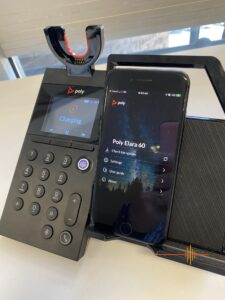 It’s a (really simple) Set up!
It’s a (really simple) Set up!
Poly once again has done well to simplify the setup process. Power it up, pair it with your phone, install the Elara Application (not necessary but highly recommended) and then pair it with either a Poly Blackwire or Voyager headset of your choice. The whole process is quick and painless – I didn’t even need to use the instructions, but they’re there if you need to refer to them.
The entire process took me under five minutes, and the Elara smartphone app enhanced the experience, helping to manage the connection with the Elara Station, handle firmware updates and customise settings.
Design: Styling that’s all work, and a bit of play
It’s a case of business up the front, party out the back with the Elara’s design… well- something like that. Looking at the Elara from the front, it’s a combination of matt and piano gloss black with the wireless charging station featuring a nice rubber pad with raised diagonal lines to grip your phone, but there are red highlights around the angular stand base and headphone mounting. It’s a nice thing as whilst you want the Elara to look piece in a work environment, it’s not going to disappear into anonymity on your desk.
The adjustable viewing pad allows you to angle your phone’s camera towards your face, and the pad it sits on doubles as a wireless charger. Uber convenient.
There’s also a decent 2.8 inch 240×320 IPS colour screen that will convey numerous elements such as current media being played, active call status and various settings.
(But wait, there’s more) Intuitive Usability
Over its time in my care, the Poly Elara has become a reliable companion at my desk. The Teams button made launching collaboration meetings easy and also allowed me to make calls with ease.
My smartphone now had a place to call home, and wireless charging meant I no longer had to remember to plug it in to charge. The Voyager headset made listening to media on my phone and laptop a breeze and switching to mobile calls or live meetings was seamless. It acted as a great intermediary between laptop, smartphone, and headset, and reflecting on my experience – made my day-to-day working life that much easier.
Paired together, a conclusion
The Poly Voyager Focus UC and Elara 60 are good on their own but even better together. Out of Poly’s range of headsets, the Voyager combined with the Elara just makes sense. They are priced at the pointy end of the market however and at about $600, it could be an expensive proposition. That being said, you may be able to talk your boss into buying it for you or claim it as a work expense- but check with your tax accountant. It could take the edge off!
Would I purchase the Voyager with the Elara? Yes, but with the caveat that I would need to use it enough to warrant the investment. It’s a very good proposition for both working from home and office environments if you regularly use a collaboration tool and rely on your smartphone as a primary device. Otherwise, if the cost is a sticking point, Voyager UC on its own may be enough and that headset is still a very good thing.
Many thanks to Poly for the loan unit of the Voyager Focus UC and Elara 60 for this review.
Product Info
Poly Voyager Focus UC (PN: 211710-101)
https://www.poly.com/au/en/products/headsets/voyager/voyager-focus-uc
Poly Elara 60 (PN: 212952-409)
https://www.poly.com/au/en/products/phones/elara/elara-60


